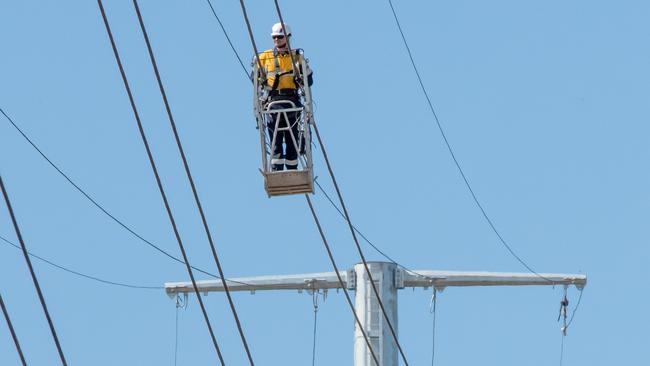Call to fast-track ‘demand response’ to stabilise energy supply
Big energy users want demand response rules to be fast-tracked and extended into the wholesale market to thwart blackouts.

Big energy users have called for new “demand response” rules to be fast-tracked and extended by allowing electricity to be sold into the wholesale market from both businesses and households as the threat of summer blackouts looms on the east coast.
A move to open up a demand response mechanism to the wholesale market has been proposed to allow large consumers of power to receive a financial benefit from cutting their own energy use when demand and wholesale prices are high, sending surplus energy back to the east coast’s electricity network.
However, with the rule not due to come on line until July 2022, major users, power aggregators and consumer groups have jointly written to the Australian Energy Market Commission requesting the acceleration of market reforms to help ease concerns over supplies in the grid.
“A new market for demand response may take some years from inception to reach a mature and optimal state,” the submission states, representing users including the Ai Group, aggregator Enel X and led by Public Interest Advocacy Centre.
“With recent and anticipated summer peak demand growth, against the backdrop of an ageing, less reliable generation fleet and Liddell power station (in NSW) closing no later than 2023, the risk of blackouts and continued market interventions is too great to wait a further three summers from now without developing the market for demand response.”
The grid operator warned last month that unplanned outages at the Loy Yang A coal-fired station (in Victoria) and a halving in capacity at the Mortlake gas generator (also in Victoria) were the most immediate dangers for this summer’s peak demand season, with a significant risk of supply falling short and “material” load shedding or blackouts.
The users’ submission said the national rule-maker should go even further than its current draft demand response proposal and extend the mechanism to allow households to participate by tapping pool pumps and household batteries that could provide electricity back to the system.
“If a full introduction before 2022 is not possible, the AEMC should fully explore options for a staged introduction starting a summer or two earlier,” their submission states.
If a draft rule on demand response by the electricity rule-maker proceeds — a final decision is due in December — it will also be likely to bring a raft of new demand aggregators into the market who may look to unite a club of big power users and bid their combined capacity into the power system.
Still, many in the market, including some of the nation’s biggest electricity players, oppose the regulatory reform.
Billionaire Sanjeev Gupta’s Simec Energy — the power retailer to big users and the South Australian government, and the energy arm of the industrialist’s GFG Alliance — told the AEMC last month it saw problems with the proposed rule change. It insisted the reform was unlikely to deliver significant demand response scale from customers and would incur significant transaction and administrative costs.
Big power companies have also raised issues with the rule change partly due to concerns about the added complexity such a move would bring to a power grid undergoing immense structural change and the prospect of a new regulatory body running the mechanism.
However, competition regulator Rod Sims says this is more of a reflection of big retailers wanting to keep a new competitor out of the market rather than any fundamental desire to look at developing the demand response market.
The ACCC argues retailers were not employing demand response “at an efficient level” and described the regulatory steps towards the mechanism as a vital development in reforming the national electricity market.
One of a new breed of power “aggregators” in the market says demand response alone could help bridge any shortfalls in the market with large users collectively tweaking their output as and when is needed.
“The mechanism has a double benefit: you’re getting resources to help reliability which is obviating the need for additional capital expenditure in thermal generation and you’re also putting pressure on prices themselves,” says Jeff Renaud, Asia and Oceania head at global demand response operator Enel X.
Large-scale demand management is gaining traction in Australia which, despite its grid woes, is still one of the most advanced economies in transitioning its energy system away from polluting sources like brown coal to wind, solar, hydro and batteries.
Businesses such as Enel X and local player Flow Power are touting the ability of industrial-scale demand response to remove “megawatts” of electricity from the market by contracting big users to switch off or time-shift their demand to times of lower prices or less stress on the network.
Flow Power CEO Matthew van der Linden told The Australian that business looking to contract at the Victorian futures price of $150 a megawatt this summer can cut their costs to $40/MWh through such demand management strategies. If the mechanism gains support and traction, the amount of demand withdrawn from the market would be enough to avoid the rolling blackouts that AEMO initiated across Victoria in January to cope with the simultaneous loss of five coal-fired generators, Mr van der Linden said.
Energy Australia, on the other hand, wants business and households to sign over some authority over their energy usage so that it can be managed.
It is running a trial involving 9000 households.

To join the conversation, please log in. Don't have an account? Register
Join the conversation, you are commenting as Logout